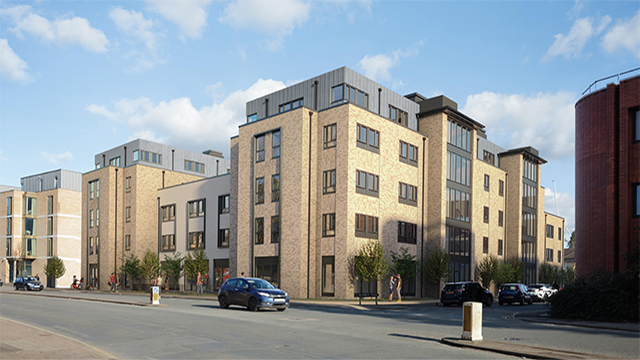How to make investment zones work
COMMENT The first few weeks of the Truss premiership have certainly been eventful. We saw a “mini” Budget that spectacularly failed to live up to its name and a market reaction that was dramatic to say the least.
Against that background, the announcement of new investment zones within the Growth Plan somehow already feels a bit like old news – partly because we currently have very little idea about how they will work.
Investment zones are intended to “drive growth and unlock housing” across the whole of the country, by offering “time-limited tax reliefs and planning liberalisation to support employment, investment and home ownership” to businesses and developers alike.
COMMENT The first few weeks of the Truss premiership have certainly been eventful. We saw a “mini” Budget that spectacularly failed to live up to its name and a market reaction that was dramatic to say the least.
Against that background, the announcement of new investment zones within the Growth Plan somehow already feels a bit like old news – partly because we currently have very little idea about how they will work.
Investment zones are intended to “drive growth and unlock housing” across the whole of the country, by offering “time-limited tax reliefs and planning liberalisation to support employment, investment and home ownership” to businesses and developers alike.
While there has been some detail on the initial tax incentives for relocating into an investment zone, the exact nature of the proposed “planning liberalisation” has been left decidedly unclear.
Tried before
The additional information published by the Department for Levelling Up, Housing and Communities suggests that it will involve:
removing burdensome EU requirements which create paperwork and stall development but do not necessarily protect the environment;
focusing developer contributions on essential infrastructure requirements;
reducing lengthy consultation with statutory bodies; and
relaxing key national and local policy requirements.
National planning policies on design, green belt protection, heritage protection, flood risk, highway impacts, public safety and building regulations will apparently be left untouched.
Ironically, given the intention to “relax” key local policy requirements, the government’s initial discussions with local authorities about investment zones do not appear to include district or borough councils. Instead, the Growth Plan announced that the government is in “early discussions” with 38 mayoral combined authorities and upper tier local authorities about possible locations for new zones. A large number of the authorities taking part in these discussions do not have planning powers of their own.
Geographically limited planning liberalisation has been tried before, with limited success. Past attempts include the introduction of permission in principle and brownfield site registers, local and neighbourhood development orders, and George Osborne’s revival of enterprise zones in the 2010s.
One of the reasons that these previous efforts failed to take off was a lack of enthusiasm by the very local planning authorities tasked with implementing them. If investment zones are to succeed where previous attempts at liberalisation have failed, all potential stakeholders – including the local planning authority – will need to be actively engaged in supporting them.
This support is going to be difficult to achieve if investment zones are not accompanied by significant amounts of public funding. Yet it is well known that our planning system is chronically under-resourced. Many councils are already struggling to find enough qualified staff to do the day job, let alone respond to and engage with the seemingly endless waves of planning reform that have emanated from central government in recent years. Planning policy departments have been particularly hard-hit. It is difficult to see how councils will be able to provide sufficient resources to get investment zones up and running without a significant influx of cash.
Lost funding
Then there is the question of how the infrastructure required to support the new developments within investment zones will be provided. The government has promised to focus developer contributions on “essential infrastructure requirements” but has not defined what these might be. There has also been very little information to date on how the lost section 106 and CIL contributions from developments within investment zones are to be replaced.
We have seen promises of:
Wider support for local growth: for example, through greater control over local growth funding for areas with appropriate governance. Subject to demonstrating readiness, mayoral combined authorities hosting investment zones will receive a single local growth settlement in the next spending review period.
Strategic direction over the affordable housing fund, including how it is used, with flexibility to acquire and regenerate derelict and empty housing consistent with the strategic aims of the fund.
Prioritised access to infrastructure funding: for example, this could potentially include the remaining circa £1.3bn Brownfield Infrastructure Fund where additional development can be delivered at pace.
However, none of this equates to a promise that the lost funding for affordable housing, play areas or any other infrastructure requirements deemed to be “non-essential” will be replaced.
We will not know how the government intends to pay for its Growth Plan until the full OBR forecasts are released later this month. But given the sheer size of the funding commitments made, it does not seem likely that additional funding for local government will be high on the agenda. This would be a mistake. The success of investment zones will be highly dependent on whether the government itself is prepared to invest.
Nicola Gooch is a partner at Irwin Mitchell
Photo courtesy of Karen Roberts Communications











